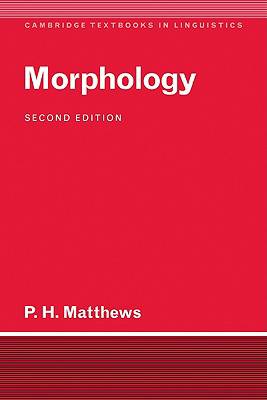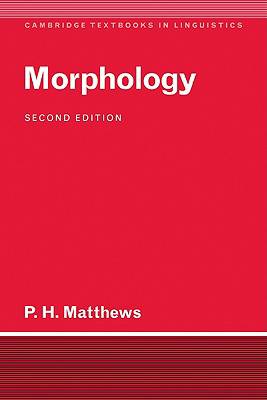
- Afhalen na 1 uur in een winkel met voorraad
- Gratis thuislevering in België vanaf € 30
- Ruim aanbod met 7 miljoen producten
- Afhalen na 1 uur in een winkel met voorraad
- Gratis thuislevering in België vanaf € 30
- Ruim aanbod met 7 miljoen producten
Zoeken
€ 160,45
+ 320 punten
Uitvoering
Omschrijving
This is an updated and substantially revised edition of Peter Matthews's well-known Morphology, first published in 1974. It includes chapters on inflectional and lexical morphology, derivational processes and productivity, compounds, paradigms, and much new material on markedness and other aspects of iconicity. As in the first edition, the theoretical discussion is eclectic and critical: its scope ranges from the ancient grammarians to the work of Chomsky and his followers, the disintegration of the classical Chomskyan scheme, and the renewed standing of morphology and historical linguistics in recent years. The examples are drawn from English and other European languages, both ancient and modern. The work will appeal to both specialists in particular languages--it contains much original material--and students of general linguistics. For this new edition much now obsolete discussion has been removed and replaced by discussion of current trends, and the further reading sections have been thoroughly updated.
Specificaties
Betrokkenen
- Auteur(s):
- Uitgeverij:
Inhoud
- Aantal bladzijden:
- 264
- Taal:
- Engels
- Reeks:
Eigenschappen
- Productcode (EAN):
- 9780521410434
- Verschijningsdatum:
- 25/10/1991
- Uitvoering:
- Hardcover
- Formaat:
- Genaaid
- Afmetingen:
- 152 mm x 229 mm
- Gewicht:
- 557 g

Alleen bij Standaard Boekhandel
+ 320 punten op je klantenkaart van Standaard Boekhandel
Beoordelingen
We publiceren alleen reviews die voldoen aan de voorwaarden voor reviews. Bekijk onze voorwaarden voor reviews.











